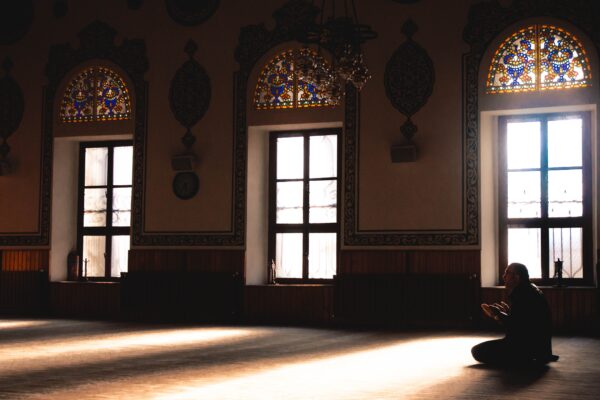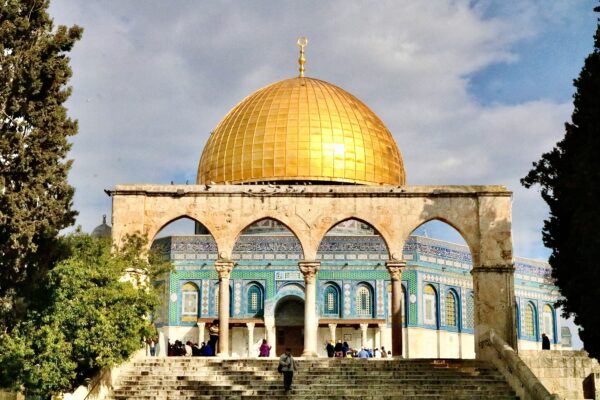A look into how the Quran and the nature of our earth may be more connected than we realize.
A look into how the Quran and the nature of our earth may be more connected than we realize.
If chapter names are any indicator of the overall message a book drives home, the Holy Quran might appear to be a work dealing with a disparate list of topics that do not seemingly have anything in common – a higgledy-piggledy compendium touching such diverse topics as, say, zoology and eschatology; politics and natural science; history and astronomy; law and literature and so on and so forth.
This peculiar nomenclature is evident in the way its lengthiest chapter, the first one after the introductory chapter Fatiha, is named after a cow, while the final and one of the shortest one is titled ‘man’. Some of them are given the names of prophets, prominent historical figures, or important terminologies and concepts in Islam, while some others have livestock, honeybee, ant, elephant, spider etc. on the title.
This diversity in naming also chimes in with the Quran’s inimitable narrative style embellished with all sorts of figures of speech. The final version of the Revelation calls to play a wide assortment of symbols, metaphors, and imageries drawn from human history and the natural environment.
In one of the initial verses, it categorically states that God does not hesitate to coin the similitude even of a gnat. The symbiosis of history and nature is a fertile ground on which the Quran builds its grand narrative of human destiny. However, it has developed an unconventional approach to dealing with both history and nature, marking a break with the convention of linear narrative and normal chronology and of descriptive storytelling method.
Instead of reducing history to a chronicle of past events, the Quran considers it a vast repository of dormant imageries and symbols which can be used as effective tools for reproducing the past for building the future.
To serve this purpose, it retells history in small anecdotes and parables, by relating them to the overall mission of human life on earth. This reinvention and demystification of history is effected through a string of powerfully crafted historical metaphors – the creation of Adam and Eve followed by their expulsion from heaven; the crow which emerged to teach man a lesson on how to bury the dead; the cow which helped Banu Israel to trace a murderer; the camel killed by Thamud which eventually wrought disaster on them; the hoopoe which served as an emissary of Solomon; the dog which mounted guard over the seven sleepers; or the donkey which was resurrected to show his master the reality of life after death.
Striking a Chord with Nature
The Quran is also replete with metaphors related to the natural environment. Almost all natural phenomena related to the diurnal and seasonal cycles recur in the Holy Book, relating them to the cycle of man’s life. It encompasses the duality of day and night; adulthood and old age; winter and summer; rain and drought; satiety and appetite; health and disease; and prosperity and adversity.
There are several instances when the reader feels that the rhythm of nature- with its entire flora and fauna- is juxtaposed against the rhythm of the human heart. Let us look at some of the verses which bring this harmony into sharp focus:
“And He it is who spread out the earth and placed therein firm hills and flowing streams, and of all fruits, He placed therein two spouses (male and female). He covers the night with the day. Lo! Herein verily are portents for people who take thought. And in the Earth are neighbouring tracts, vineyards and ploughed lands, and date-palms, like and unlike, which are watered with the same water. And we have made some of them excel others in fruit. Lo! Herein verily are portents for people who have sense.” (Surah Al-Ra’ad: 3, 4)
The ephemerality and vicissitude of life are nicely portrayed by using the metaphor of greenery in a parched land after it was blessed with rain, which is again followed by a period of drought and barrenness. The fertility of the earth is often compared to the productivity of a believer’s mind while the sterility of an unbeliever’s heart is equalled to the desolateness of rocky and mountainous terrain. In a scathing remark, hearts devoid of insights are likened to hard rocks. But the tone becomes harsher when it adds that unlike those hearts some rocks are to be split asunder or shaken to the core by the fear of God.
Even prayers or worshipping God, which the Quran defines as the one and only reason for the creation of man, has been associated with the overall rhythm of nature. A verse in the chapter Nur goes to the extent of saying that God is exalted by everything within the heavens and the earth and [by] the birds with wings spread [in flight]. “Seest thou not that it is Allah whose praises all beings in the heavens and on earth do celebrate, and the birds (of the air) with wings outspread? Each one knows its own (mode of) prayer and praise. And Allah knows well all that they do.”
Another frequently used symbol is that of rain. There is no better simile than rain to describe the transience of worldly life. It is a harbinger of pleasure and prosperity not only for men but for many other creatures. But this occasional visitor is never at our beck and call. We are never in a position to dictate terms for the rain. It is a blessing of God, indeed. But it is also a reminder of the importance of striking a balance in everything we do. We cannot do without rain, but we cannot also do with too much rain.
The Quran itself talks about a couple of events in history when incessant rain or water was instrumental in wiping some people and civilizations off the face of the earth. In another instance, the Quran employs the symbol of dark rain followed by thunder to mention the state of people devoid of spiritual light. Although they take occasional flash lighting for a way out from this pall of darkness encircling them, the darkness gets denser and thicker and they are left reeling desperately.
In another verse, the deeds of those who disbelieve are likened to a mirage in a lowland which a thirsty man takes for water. In the subsequent verse, it mutates into a tragic metaphor of darkness within an unfathomable sea which is covered by waves upon waves, with dark clouds hanging over it. The darkness gets thicker to such a level that when one puts out his hand, he can hardly see it.
But one of the most striking similes in the Quran is the comparison of God to the light permeating the heavens and the earth. This simile has multiple layers of meaning. The vastness of the heaven and earth in the first layer gives way to the beauty of a niche, with a lamp inside it and kept in a glass. At the next level, by comparing it to a star and tracing its light to an olive tree neither of the east nor of the west, the light of God outshines all other sources of lights in the earth and the heavens.
This simile indirectly suggests that even the sun, arguably the largest source of energy in the world, is incapable of lighting the entire world alike. When it reaches its extreme level of brightness at one pole of the earth, its power comes down on the other end.
Allegories Galore
The allegorical portrayal of the tale of the People of Cave in the Quran gives us fascinating insights into the real meaning of freedom and confinement in this world.
Paralleling the tale of Seven Sleepers of Ephesus in the Christian tradition, the story demands a radical overhaul of our concept of power, supremacy, and freedom. Unflinching was the commitment to truth, and the quest for freedom of the young heroes in the story who fled the persecution of a tyrannous king and his oppressive regime, seeking refuge in a cave. They preferred the freedom offered by a narrow cave to the confinement in their geographically vast country.
In the parable of the first murder, Cain looked dejected and was desperately trying to cover it up. Contrary to his expectations, the homicide brought more problems than it solved. He was too horrified to deal with its consequences, let alone enjoy its fruits. Eventually, it was a poor crow that turned up to his rescue by showing him how to bury the dead. The first challenge Cain faced after his fratricide was how to bury the corpse. But beyond the simple question of interment, it was a big crisis of managing the sin. Killing his brother was rather easy, but getting away from his remnants was not.
In the story of Joseph, spread over one of the aesthetically beautiful chapters in the Quran, it develops to the stage of narrative fiction where the father and his eleven sons are compared to the sun and stars. Beginning from the tale of a small boy sharing with his father an extraordinary dream he had the previous night, it expands to a full-fledged story touching the multiple aspects of human life such as affection, greed, sibling rivalry, envy, hatred, murder, lie, deceit, love, lust, revenge, treachery, imprisonment, victimhood, vicissitudes of prosperity and penury, etc.
Towards the end of the story, the boy who was once abandoned by his own brothers in a deserted well in the middle of a jungle emerges as the King, and extends unconditional and unqualified pardon to his erstwhile enemies. The story comes to a dramatic end with his father and eleven brothers bowing down before him, marking an emotional fulfillment of his childhood dream.
It All Started With a Few Words…
Man’s relationship with nature plays a predominant role in the evolution of his culture and civilization. The genesis and development of almost all streams of human knowledge, with the sole exception of revelation, relates in one way or the other to man’s struggle against and coexistence with nature where he/she was sent to live through the trajectories of this precarious existence. A cursory look at the nomenclature of all disciplines of human knowledge will give credence to this theory as most of them were the results of man’s ardent pursuit to explore nature.
The evolution of human civilization itself is the evolution of human knowledge and the multiplicity of its application in its myriad forms and manifestations. The first moment when the first man in the universe was endowed with knowledge is beautifully portrayed in the Quran. After creating man and before exhibiting him in front of the Angels, the Almighty taught him some names/ words. This was the occasion when man was equipped with some potential skills and faculties which are essential for his upcoming mission on Earth.
This was followed by a dazzling performance by the first man in front of Angels who were mesmerised by his mastery of words. This has also forced them to rectify their misapprehensions about man’s creation. It was also the occasion when man successfully demonstrated the superiority of his knowledge in front of the Angels. This knowledge supported by intellect was also an instrument gifted to man to prove the distinctiveness and pre-eminence of his existence on the earth. Despite being physically weak compared to a number of species, man, driven by the sharpness of his wit and the power of his wisdom, managed to outmaneuver and conquer all others and emerge as the architect of an advanced civilisation. It all begins with a few words his first father was taught soon after the creation.
The system of language that man developed over a period is deemed to be the most complicated means of communication across all species. The words Adam was first taught constituted the springboard for humanity to develop its advanced system of communication which has now undergone unprecedented transformation in this fast-paced digital age.
Nature as a Workshop of Civilisation
The relentless urge to discover the hidden or go beyond the limits of the known is intrinsic in the nature of every human being, as exemplified by the way the first man and woman reacted when they were mysteriously denied permission to relish the fruits of a lone tree in paradise.
But that act of rebellion against what looked like the one and only enigmatic thing in Paradise opened the floodgate of a lot of unsolved questions in front of them. In Paradise there was only one thing to be known, that is how that forbidden fruit tasted like; but on the earth, there were a lot of things to be explored and sought after, and unlike Paradise, they had to sweat blood to earn a living.
They came into this world with the potential and capabilities to explore these mysteries because the names they were taught soon after their creation carried the keys to all these secrets. The history of human civilization from its infancy to the current stage of its celebrated maturity, if we go by the Darwinian ladder, was an evolution of human understanding of nature.
Honeybees collect nectar and build their apiaries in the same old way, animals and birds still employ the grand old techniques to search for food, communicate, and build their nests; but man has gone a long way by rebuilding and innovating his fiefdom from time to time, while most of the other creatures around them in the earth celebrated their seemingly monotonous existence.
When our civilisation developed and our culture assumed an urban facelift, we tried to change our surroundings to suit our new requirements. We continue to explore the full potential of nature either utilising it more constructively or exploiting it rampantly. But nature did not undergo any change on its own, except that it remained supple enough to undergo our domination at considerable risk to its old and genuine rhythm.
At a time when we understood the limitation of nature in rendering what we really aspire to, we expanded our scope by creating our own virtual worlds where we explored the scope of living away from nature. The whole process of urbanisation, mechanisation and digitalisation also involved the process of our gradual progression towards denaturalisation. The virtual world we are creating through automation and digitalisation will definitely accelerate the pace of this denaturalisation.
But despite this propensity to grow beyond nature, our existence is inherently rooted in nature. The more we tend to stay away from nature, the more enchanting it will become; the farther we try to go away from it, the closer to it we reach.
The beauty of nature continues to beckon us; in order to relieve the boredom of our mechanical life we turn to the sky, the moon, the sunrise and sunset, the sea, rivers, mountains, deserts, greenery, waterfalls, woods, birds, and animals etc. Even in the virtual world, we desperately try to reinvent the elements of nature that we miss in our real life. It means that nature is inseparably connected to how we relate ourselves to this world, for all our pretensions to prove otherwise.
How can we cherish in our dreams something more beautiful than nature when we imagine Paradise as a place of marvelous natural beauty? The beautiful description of Paradise recurring in the Quran as a place of a pristine and beautiful garden tucked away in an idyllic site, downstream of small rivulets, speaks volumes about our ‘undying’ passion for nature and its beauty.
(Source)





